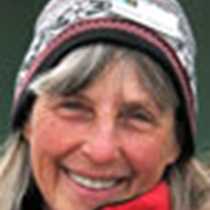LeConte Bay and Petersburg
We boarded Zodiacs just after breakfast to enter the enchanted world of floating ice, where fanciful castles and delicate swans bobbed beside immense blue icebergs. LeConte Glacier is one of about a dozen fed by the Stikine Ice Field and is the southernmost tidewater glacier in the northern hemisphere. Growlers, bergy bits, and true icebergs travel for miles before accumulating in LeConte Bay, our morning destination. A moraine of gravel and rubble left here long ago by the glacier has made the water shallow, and large chunks of ice regularly run aground and choke the quiet bay. Little sediment is visible within this glacial ice, so it is particularly clean and blue.
The remainder of the day was filled with options in the town of Petersburg, a fishing community settled by Peter Buschmann in 1897 along with others of Norwegian ancestry who followed. It still retains evidence of this Scandinavian heritage with a replica of a Viking ship, the Sons of Norway Hall, and colorful paintings of flowers on the shutters of the buildings. A number of guests took off flightseeing by float plane, while others chose an aerobic hike, hopped onto bicycles, or wandered the narrow streets. Naturalist-led walks provided opportunities to learn more about fishing boats, marine invertebrates, and peat bogs known as muskegs. There was still time for shopping and, although there are few gift shops, the bookstore and hardware store were among the favorite stops.
Dr. Andy Szabo, Director of the Alaska Whale Foundation, joined us for a delicious dinner of fresh Dungeness crab from Petersburg. He presented a fascinating, illustrated talk about his research in the region and the natural history and behavior of humpback whales. Andy then departed by skiff, and the National Geographic Sea Bird continued on its way towards the Tracy Arm-Ford’s Terror Wilderness for tomorrow’s exploration.




